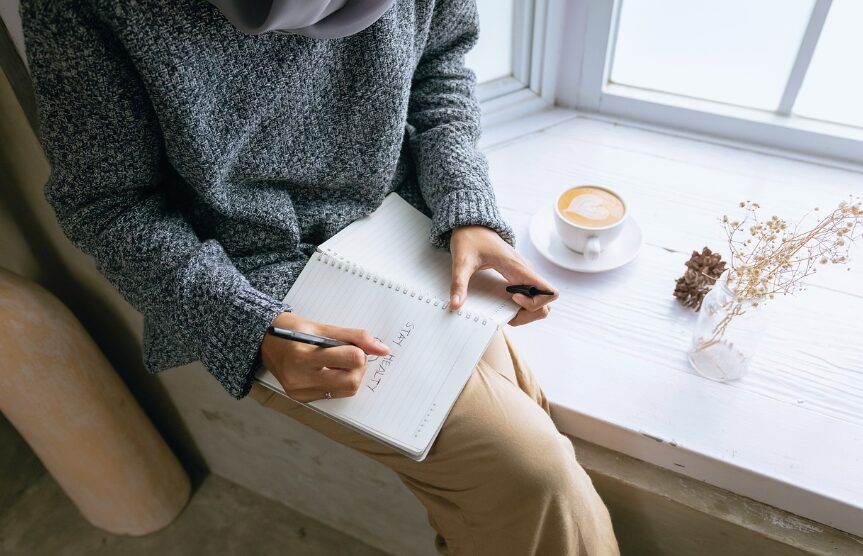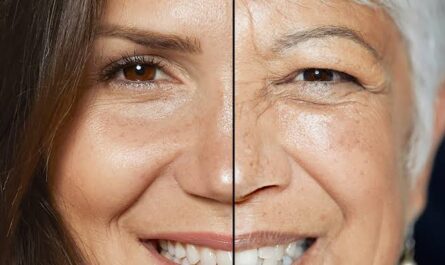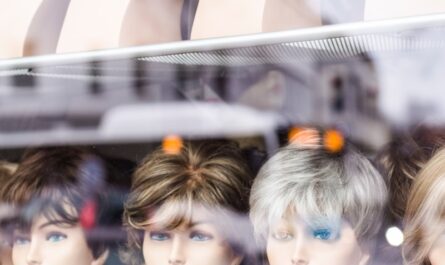Mainstream culture projects relentless—and often contradictory—images of what counts as “beautiful.” A single scroll can show impossibly smooth skin, surgically sculpted bodies, or viral filters that elongate eyes and shrink jaws. These patterns seep into our subconscious, coaxing us to rank ourselves against an artificially narrow spectrum. Reclaiming a personal definition of beauty is, therefore, an act of autonomy: you consciously decide whose opinions matter, what aesthetics resonate, and where your self‑esteem derives from. This guide walks you through twelve pillars—spanning historical context, media literacy, sensory rituals, and community—to help you shift from passive consumer of ideals to active curator of your own beauty narrative.
1. Understand Where Mainstream Standards Come From
Historical Rollercoaster: Ancient Greek sculptures worshipped athletic muscle tone; the Renaissance prized voluptuous figures as symbols of abundance; the 1920s flapper era celebrated boyish silhouettes and pale skin. By tracing these shifts, you realize “ideal beauty” pivots every few decades, exposing its arbitrary core.
Economic Engine: Beauty isn’t just aesthetic—it’s an industry valued at over USD 500 billion globally. Advertisers thrive on manufacturing insecurity: clearer skin becomes an upsell for serums; thinner waists boost diet‑plan subscriptions. Knowing there’s money behind each insecurity makes rejecting them easier.
Algorithms at Work: Social‑media algorithms prioritize high‑engagement posts—often those sparking envy or awe. When you see dozens of poreless selfies in a row, remember: a computer program, not collective reality, hand‑picked your feed.
Action Step: Create a “Beauty Myth Timeline” in your journal listing at least five historic beauty trends and the social forces behind them (e.g., corsets and Victorian modesty). Seeing fashions rise and fall underscores their impermanence.
2. Conduct a Personal Beauty Audit
Keep a two‑day log: every time a TV show, advertisement, or comment makes you think about your looks—positively or negatively—write it down. Beside each entry, rate its effect:
- –5 = deep insecurity spike
- 0 = neutral
- +5 = genuine confidence boost
Patterns emerge: maybe certain influencers uplift you while trendy “what I eat in a day” reels do the opposite. Curate inputs—mute, unfollow, or create “close‑friends” circles that align with your evolving standard.
Micro‑habit: Once a week, unfollow at least one account that triggers comparison and replace it with a creator who shares candid, unfiltered content.
3. Define Internal Metrics of Beauty
Write two lists:
- Core Values (e.g., curiosity, kindness, resilience).
- Sensory Preferences (colors, textures, scents that feel like “home”).
Match them: if creativity is a value and you love bold colors, maybe teal eyeliner or thrifted patchwork jackets embody your beauty ideal. If serenity matters and you adore lavender scent, minimalist clothing in earth tones may align better. Beauty becomes a tangible expression of intangible values.
Guided Visualization: Close eyes for 60 seconds. Picture your 80‑year‑old self looking back. Ask: “What aesthetics made me feel alive and authentic?” Note the first three images or sensations that arise—they’re your internal compass.
4. Establish Daily Rituals that Anchor Self‑Defined Beauty
Two‑Minute Mirror Ritual: Each morning, state one aesthetic trait and one personality trait you appreciate. Example: “I love my smile lines—they narrate years of laughter. I’m also adaptable.”
Body‑Gratitude Scan: While showering, mentally thank each body part: “Thank you, knees, for morning jogs.” Function‑focused appreciation recalibrates beauty from looks to capability.
Self‑Expression Play Hour: Schedule 30 minutes weekly to experiment without judgment—maybe vintage hairstyles, gender‑fluid outfits, or bare‑face selfies. Playfulness chips away at fear.
5. Challenge External Feedback Without Burning Bridges
Neutral Phrases: In response to unsolicited critique—“You’d be prettier if you lost weight”—use calm rebuttals: “I prefer focusing on how I feel,” or “I’m comfortable with my choices.”
Compliment Culture Shift: Model deeper compliments: praise enthusiasm, empathy, or humor. Demonstrative language re‑educates your circle that beauty isn’t just visual.
Conversation Pivots: If discussions spiral into diet talk, redirect: “Curious what everyone’s reading lately.” Over time, friends adopt new conversational norms.
Boundary Affirmation: Write and rehearse a one‑sentence boundary for your most common trigger scenario. Practicing aloud reduces on‑the‑spot stress.
6. Engage All Five Senses in Your Redefinition
- Sight: Replace generic art with visuals celebrating wrinkles, stretch marks, or diverse faces.
- Sound: Curate anthems about self‑love (“I Am Light,” India Arie).
- Smell: Choose fragrances tied to positive memories—pine from childhood hikes beats trend‑driven perfumes.
- Touch: Favor fabrics that soothe, like organic cotton or velvet, enhancing bodily comfort.
- Taste: Cook meals rooted in cultural heritage or seasonal produce, decoupling beauty from restrictive eating.
Sensory alignment grounds your definition in lived experience, not societal hype.
7. Document Progress and Setbacks
Maintain a “Beauty Evolution Journal.” Sections:
- Victories: Moments you felt radiant on your own terms.
- Triggers: Events reigniting old insecurities.
- Toolbox Used: Breathwork, affirmations, or friend call that helped.
Monthly, reread entries. Progress is rarely linear—seeing both highs and lows affirms growth trajectory.
8. Build Affirming Community
Join groups celebrating body diversity—virtual book clubs on body neutrality, local natural‑hair meet‑ups, or plus‑size hiking collectives. Shared stories normalize struggles and successes.
Accountability Partners: Exchange daily voice notes naming one self‑celebration moment. Hearing supportive feedback out loud reinforces neural pathways linked to self‑trust.
Mentor Inspiration: Follow public figures who own unconventional beauty—Lizzie Velásquez (rare genetic condition) or model Aaron Philip (wheelchair user). Their visibility proves there’s room for every aesthetic.
9. Strengthen Media Literacy
Spot the Edit: Learn to identify warped waistlines or repeated skin pixels—tells of Photoshop. Once you see the puppet strings, the puppet loses power.
Representation Math: Only about 5% of beauty ads feature people with disabilities; older women appear in less than 8% of magazine covers. Knowing the numbers reframes what’s “normal.”
Vote with Wallet: Support brands that extend shade ranges, offer adaptive fashion, and hire diverse talent behind the lens. Money wields influence where hashtags may not.
10. Incorporate Mind–Body Practices
- Yoga & Somatic Movement: Shift focus from mirror image to kinesthetic sensation. Poses like Warrior II cultivate internal strength symbolism.
- Breathwork: 4‑7‑8 technique (inhale 4, hold 7, exhale 8) lowers cortisol, which often spikes when comparing appearances.
- Body‑Scanning Meditation: Lie still, sweeping attention from toes to scalp. Notice sensations without labeling “good” or “bad.” Neutral observation retrains the judgmental mind.
11. Frame Relapse as Data, Not Defeat
Old standards can resurface during weddings, family gatherings, or swimsuit seasons. Instead of self‑shaming, treat the flare‑up as data: What environment? Which comment? Add notes to your journal. Identify patterns—maybe certain relatives’ back‑handed remarks fuel self‑doubt. Pre‑plan coping tools: bring affirmative podcasts for post‑event decompression, or set five‑minute bathroom breathing breaks.
12. Celebrate Milestones Your Way
- Quarterly Self‑Image Anniversary: Light a candle, reflect on journal entries, rewrite your beauty manifesto.
- Creative Artifact: Paint, compose music, stitch clothing symbolizing your journey. Art externalizes internal shifts.
- Ritual Release: On slips of paper, write outdated beauty rules (“must be size 4,” “no grey hair”). Burn or shred them ceremonially. Tangible release imprints change.
Conclusion: Beauty as Self‑Authored Narrative
Recent research in neuroplasticity underscores why these practices work: when you consistently replace critical self‑talk with neutral or affirming language, you strengthen entirely different neural pathways than the ones built by years of comparison. Functional‑MRI studies show that repeating compassionate statements lights up the brain’s anterior cingulate and insula—the same regions activated when we comfort a loved one. In other words, the mind doesn’t fully distinguish between receiving kindness from others and offering it to yourself. By pairing daily mirror rituals with breath‑based calm techniques, you effectively rewired thought loops that once defaulted to “not good enough.” Over time the new circuitry becomes your mental autopilot, so confidence feels less like a pep‑talk performance and more like a resting state.
Cultivating a self‑authored beauty lens also ripples outward, reshaping social ecosystems you inhabit. Friends notice when you compliment them on their laughter instead of their eyeliner, and many begin echoing that depth back. Children in your orbit learn—from observation rather than lecture—that appearance is just one of many interesting facets a person can showcase. Even workplaces benefit: studies from Deloitte and McKinsey link inclusivity and psychological safety to higher innovation and revenue growth. When employees feel accepted independent of rigid aesthetics, they pitch bolder ideas and collaborate more freely. Your individual journey, then, doesn’t end at the bathroom mirror; it seeds cultural change that can soften society’s standards for everyone.
Cultivating a personal definition of beauty isn’t about flipping society the bird and retreating into isolation; it’s about turning down the external volume so you can actually hear yourself. By studying history, auditing media, engaging all five senses, and weaving supportive community, you build a layered, resilient framework that honors your uniqueness.
When beauty stems from lived values—creativity in bold eyeliner, serenity in minimalist tones—criticism loses its sting. Your mirror becomes less a courtroom and more a collaborator in daily self‑expression. The energy once wasted on comparison transforms into fuel for projects, relationships, and the quiet joy of being at ease in your own skin.
Society’s standards won’t vanish overnight, but armed with literacy, boundaries, and ritual, you decide how much room those standards rent in your life. Ultimately, a world filled with self‑defined, diverse beauty is richer in color, compassion, and creativity—proving that the most transformative make‑over begins in the mind and radiates outward.



